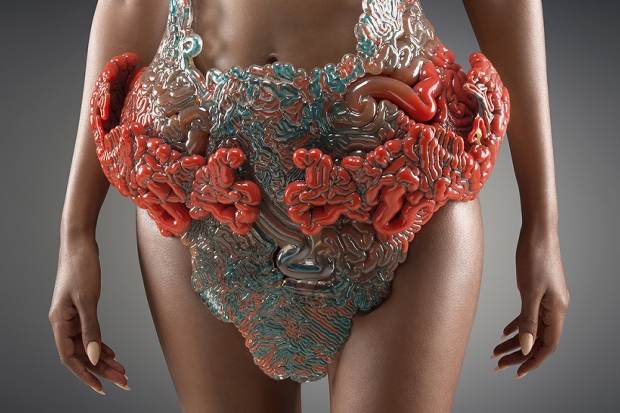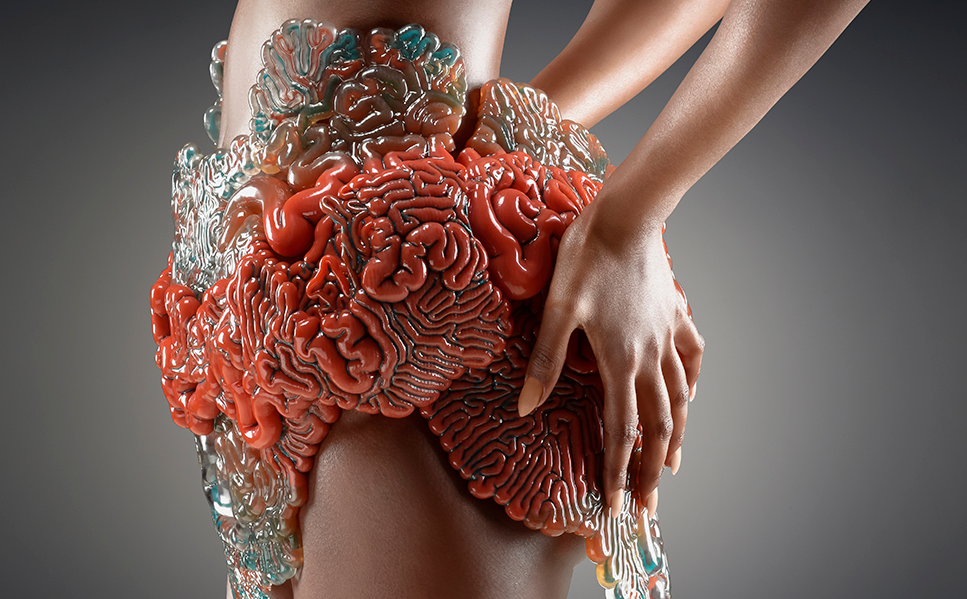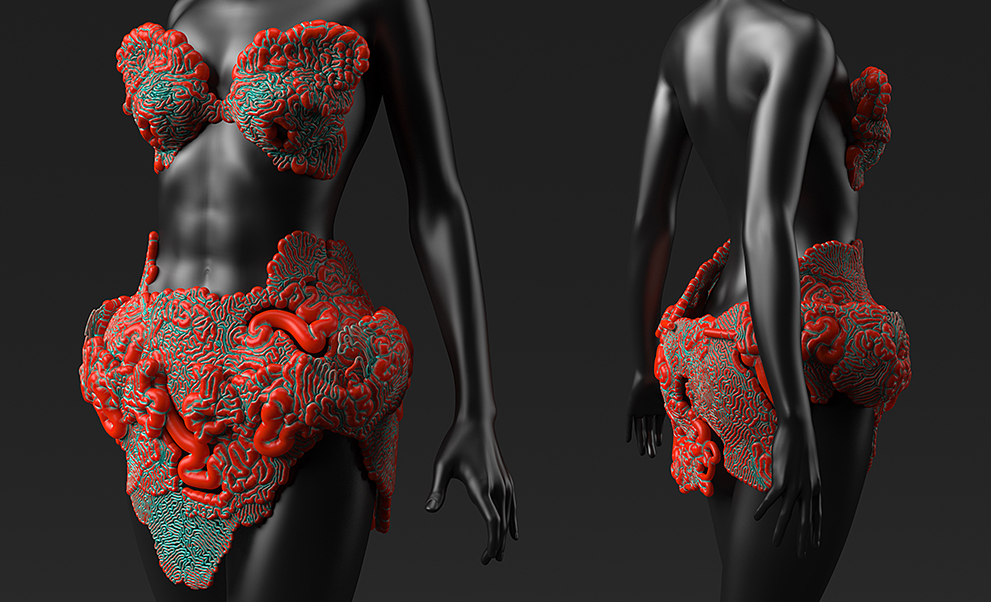INHALE is a cultural platform where artists are presented, where great projects are given credit and readers find inspiration. Think about Inhale as if it were a map: we can help you discover which are the must-see events all over the world, what is happening now in the artistic and cultural world as well as guide you through the latest designers’ products. Inhale interconnects domains that you are interested in, so that you will know all the events, places, galleries, studios that are a must-see. We have a 360 degree overview on art and culture and a passion to share.

Mushtari (مشتري)
Jupiter’s Wonderer
By Neri Oxman
2014, 3D Print
Euromold, Frankfurt, Germany
Jupiter is the largest planet in the Solar System with a mass two and a half times greater than the mass of all other planets in the Solar System combined. Named after the king of the gods, its Arabic name reflects is vastness (Mushtari means huge, giant). Designed as a single strand filled with living matter inspired by the form and function of the human gastrointestinal tract, this wearable is designed as a an organ system for consuming and digesting biomass, absorbing nutrients and expelling waste. The peristaltic movement of matter within 3D printed translucent tracts is designed to support the flow of cyanobacteria engineered to convert daylight into consumable sucrose.
Production: Stratasys
3D printed with Stratasys multi-material 3D printing technology
In collaboration with Christoph Bader and Dominik Kolb
Photos: Yoram Reshef
About the Collection
Wanderers, An Astrobiological Exploration
Traveling to destinations beyond planet Earth involves voyages to hostile landscapes and deadly environments. Crushing gravity, amonious air, prolonged darkness, and temperatures that would boil glass or freeze carbon dioxide, all but eliminate the likelihood of human visitation. Wanderers explores the possibility of voyaging to the worlds beyond by visiting the worlds within. 3D printed wearable capillaries designed for interplanetary pilgrims are infused with synthetically engineered microorganisms to make the hostile habitable and the deadly alive. Each design is a codex of the animate and inanimate with an origin and a destination: the origin being engineered organisms, which multiply to create the wearable within a 3D printed skins; and the destination being a unique planet in the solar system. The setting for this exploration is the solar system where, with the exception of planet Earth, no life can exist. The series represents the classical elements understood by the ancients to sustain life (earth, water, air and fire), and offers their biological counterpart in the form of microorganisms engineered to produce life-sustaining elements.
The wearables are designed to interact with a specific environment characteristic of their destination and generate sufficient quantities of biomass, water, air and light necessary for sustaining life: some photosynthesize converting daylight into energy, others bio-mineralize to strengthen and augment human bone, and some fluoresce to light the way in pitch darkness. Each wearable is designed for a specific extreme environment where it transforms elements that are found in the atmosphere to one of the classical elements supporting life: oxygen for breathing, photons for seeing, biomass for eating, biofuels for moving, and calcium for building.
via materialecology.com





























































